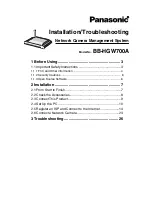
SKU 92474
For technical questions, please call 1-800-444-3353.
PAGE 4
SPECIFIC SAFETY RULES
1.
Maintain a safe working environment.
Keep the work area well lit. Make sure
there is adequate surrounding workspace. Always keep the work area free of ob-
structions, grease, oil, trash, and other debris. Do not use the Brake Bleeder/Vacuum
Pump in areas near flammable chemicals, dusts, and vapors. Do not use this prod-
uct in a damp or wet location.
2.
Maintain labels and nameplates on this product.
These carry important infor-
mation. If unreadable or missing, contact Harbor Freight Tools for a replacement.
3.
Keep the Handles of the Brake Bleeder dry, clean, and free from brake fluid,
oil, and grease.
4.
Prior to using the Brake Bleeder/Vacuum Pump make sure to read and under-
stand all warnings, safety precautions, and instructions as outlined in the
vehicle manufacturer’s instruction manual.
Every vehicle has specific mea-
surement values for vacuum related readings. It is beyond the scope of this manual
to properly describe the correct procedure and test data for each vehicle.
5.
WARNING!
Carbon monoxide is produced while a vehicle’s engine is operat-
ing and is deadly in a closed environment. Early signs of carbon monoxide poison-
ing resemble the flu, with headaches, dizziness, or nausea. If you have these signs,
the work area may not be vented properly. Get fresh air immediately.
6.
Prior to using the Brake Bleeder/Vacuum Pump, make sure to place the
vehicle’s transmission in “PARK” (if automatic) or “NEUTRAL” (if manual).
Then, block the tires with chocks.
7.
Be alert for hot engine parts to avoid accidental burns.
8.
Avoid accidental fire and/or explosion. Do not smoke near engine fuel and
battery components.
9.
Use the Brake Bleeder only with brake fluid.
Do not attempt to use the tool to
siphon any other liquids. Damage to the internal chamber and seal, or future brake
fluid contamination may result.
10.
Follow guidelines for proper brake fluid disposal.
Used brake fluid should be
removed from the vehicle and properly recycled. Many states require recycling.
Contact your local solid/liquid waste authority for information on recycling. Do not
reuse old brake fluid.
11.
Brake fluid is corrosive.
Avoid spilling it on the vehicle’s exterior, it can harm
automobile paint.


























